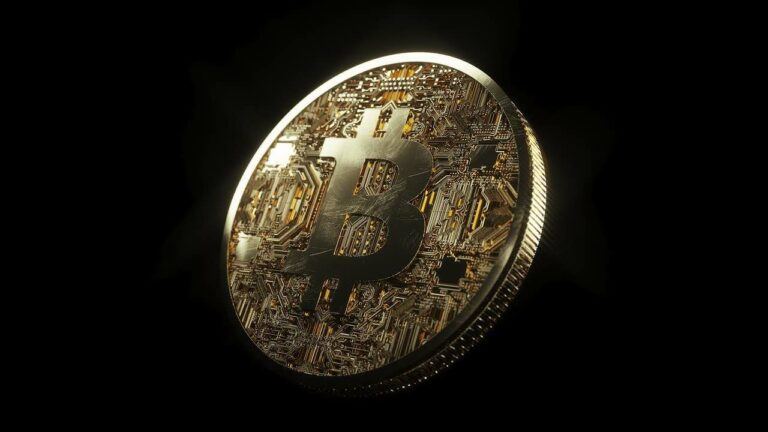This article examines how the current COVID-19 pandemic and Bitcoin’s upcoming halving (on May 12) could affect the price of Bitcoin (BTC) in the short, medium, and long term.
How the Bitcoin Price Could Be Affected in the Short Term
Some advocates of Bitcoin — such as Anthony Pompliano (aka “Pomp), Co-Founder and Partner at crypto-focused asset management firm Morgan Creek Digital Assets — have long insisted the Bitcoin is a totally uncorrelated asset.
However, as various members of the crypto community have observed, since the start of the COVID-19 crisis, Bitcoin seemingly has mostly behaved as a “risk-on” asset rather a “risk-off” (or “safe haven”) asset and displayed a moderatively positive correlation to the S&P 500 index (note that 0 = no correlation, 1 = perfect correlation, and -1 = perfect negative correlation).
Here are a few examples of such opinions from crypto analysts/traders:
Everyone who's longing BTC here is effectively long S&P 500. There is some small divergence but the correlation is undeniable and nowhere close to going away. Bitcoin was even trading sideways over the weekend because it didn't know what to do pic.twitter.com/lkvcd99IkR
— Larry Cermak (@lawmaster) April 7, 2020
Would depend on what stock indices do. Bitcoin continues to trade like a risk-on asset. Rolling correlations between $BTC and the S&P 500 remain around historical highs. pic.twitter.com/Pk9wItpc79
— Alex Krüger (@krugermacro) April 16, 2020
10/ In a market crash, “all correlations go to one”. During the month of March, the correlation between Bitcoin and the S&P 500 was 0.496 — a value far outside the range expected from any uncorrelated asset.
— yuriy anosov (@yanosov) April 29, 2020
But what about outside the crypto space? Does anyone else believe in this correlation between Bitcoin and the S&P 500?
Well, recently, the Federal Reserve Bank of Kansas City, which is one of 12 regional Reserve Banks that, along with the Washington, DC-based Board of Governors, makes up the central bank of the U.S., looked at the behavior of U.S. government bonds, gold, and Bitcoin from January 1995 through February 2020, and commented on the correlation of Bitcoin with the S&P 500 during this period.
The research done by the Kansas City Fed (aka “KC Fed”) was published on April 15 as a research paper titled “Safe-Haven Performance in the Age of Bitcoin”.
Here is what they found:
“Bitcoin has a weak positive correlation with the S&P 500 during periods of financial stress, suggesting Bitcoin behaves more like a risk asset than a safe haven.”
It is worth pointing out, however, that not everyone agrees that COVID-19 has caused Bitcoin to enter a period where it is experiencing a significant correlation with the S&P 500.
For instance, Blockchain analytics startup Coin Metric says that although the correlation between and the S&P 500 did reach historically high levels on Black Thursday (March 12), under normal market conditions, there is not a significant correlation:
1/ On Black Thursday (March 12th), BTC and S&P 500 correlation shot up to historically high levels after when the crypto markets and equity markets both experienced large, sudden losses. Correlation then decreased back to relatively normal levels by the end of March. pic.twitter.com/IBdImXLuPE
— CoinMetrics.io (@coinmetrics) April 14, 2020
4/ Over the last year, Bitcoin and the S&P 500 have had a correlation close to zero. This chart shows distribution of intraday correlation (5 min returns, 60 hour rolling correlation) over the last 365 days. It’s relatively centrally distributed around 0, with a mean of -.0075. pic.twitter.com/pshCguCbRB
— CoinMetrics.io (@coinmetrics) April 14, 2020
If it is indeed true that the Bitcoin price is currently correlated with the S&P 500 to some degree, then any news that helps U.S. stock prices to go up — such as good news about potential antiviral drugs or vaccines for COVID-19 — should also have some positive impact on the price of Bitcoin and any news that hurts U.S. stock prices — such as increases in the number of COVID-19 cases across the U.S. or poor U.S. unemployment numbers — should also negatively impact the price of Bitcoin.
Of course, as we get closer to Bitcoin's next halving event (which is expected to occur on May 12, i.e. in less than one week), it is possible that speculation will play a part an important part, and that Fear of Missing Out (“FOMO”) could cause a significant increase in the price of Bitcoin in the run-up to this event even though there is not universal agreement on whether the halving has already been priced in.
Some people in the crypto space believe that FOMO has already started.
For instance, on April 30, Binance Co-Founder and CEO Changpeng Zhao (aka “CZ”) announced that his firm’s reported 24-hour trading volume had reached a new all-time high — $16 billion — and declared that the crypto market was in “FOMO mode”:
Damn son, $15.9 BILLION a couple hours later.
Still going strong. FOMO mode now. Took a while, lol.
Slowly but surely. https://t.co/Fe1PPX0kim pic.twitter.com/gsgfDyVsbQ
— CZ Binance 🔶🔶🔶 (@cz_binance) April 30, 2020
How the Bitcoin Price Could Be Affected in the Medium and Long Term
Although there is some debate about the correlation of Bitcoin with the S&P 500 in the short term, most people (including the KC Fed) would agree that — with the exception of the current unprecedented crisis that the world is facing — since its birth Bitcoin has generally not shown any statistically significant correlations with the S&P 500.
So, what could affect the price of Bitcoin in the medium and long term?
There are two main possibilities:
- The upcoming halving
- Monetary and fiscal measures used to fight the economic impact of COVID-10
On April 30, Dan Morehead, Founder, Co-CIO, and CEO of blockchain-focused investment firm Pantera Capital Management LP (“Pantera Capital”), discussed both of these topics in the April 2020 issue of Blockchain Letter (Pantera Capital’s monthly newsletter), which Pantera Capital published as a blog post on May 4.
Here is what Morehead wrote about the Bitcoin halving on May 12:
“Although there are only a couple of data points – and with the caveat that the past doesn’t predict the future – halvings have coincided with increases in price due to a perceived and/or real scarcity of supply.
“Efficient Markets Theory would hold that if we **all** know it’s going to happen, then it has to be priced in.
“Paraphrasing a line attributed to Warren Buffet on the dogma, ‘The markets are almost always efficient, but the difference between almost and always is $80 billion to me.’
“Thus, even if we think everybody knows something it doesn’t mean there isn’t a ton of money to be made.
“It seems reasonable to say that if the new supply of bitcoin is cut in half, all else being equal, the price should rise.
“This ceteris paribus line is easy to envisage.
“Most miners sell their block rewards as fast as they can. They need the money to pay for energy, data center space, and to buy faster chips in the never-ending arms race. When the number of bitcoins they receive and thus sell is cut in half, it’s got to have an impact.
“That is what has happened in both past cycles. The magnitude of the impact is proportional to the scale of the decrease in supply.”
As for the massive amount of quantitative easing that we are witnessing, here is what Morehead has to say:
“As Quantitative Easing approaches infinity, it simply has to have an impact on things whose quantity can’t be eased.
“When governments increase the quantity of paper money, it takes more pieces of paper money to buy things that have fixed quantities, like stocks and real estate. They settle above where they would absent an increase in the amount of money.
“The policy is already achieving its goal: the S&P500 is actually above its May 31, 2019 level. There is no chance that would be true without trillions of new dollars.
“Like hydrostatic pressure, that flood of new money will float all boats – inflating the price of other fixed-quantity assets like gold, bitcoin, and other cryptocurrencies.”
As if we needed another reminder of the crazy amount of money printing that will be needed to fight the economic impact of COVID-19, yesterday, the U.S. Department of the Treasury announced via a press release that for the current quarter, it expects to borrow roughly $3 trillion:
“During the April – June 2020 quarter, Treasury expects to borrow $2,999 billion in privately-held net marketable debt, assuming an end-of-June cash balance of $800 billion.
“The borrowing estimate is $3,055 billion higher than announced in February 2020.
“The increase in privately-held net marketable borrowing is primarily driven by the impact of the COVID-19 outbreak, including expenditures from new legislation to assist individuals and businesses, changes to tax receipts including the deferral of individual and business taxes from April – June until July, and an increase in the assumed end-of-June Treasury cash balance.
As for the next quarter, it said:
“During the July – September 2020 quarter, Treasury expects to borrow $677 billion in privately-held net marketable debt, assuming an end-of-September cash balance of $800 billion.”
Featured Image by “SnapLaunch” via Pixabay.com








